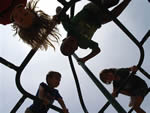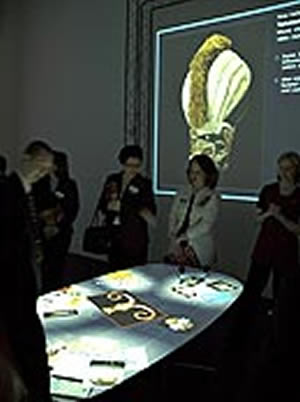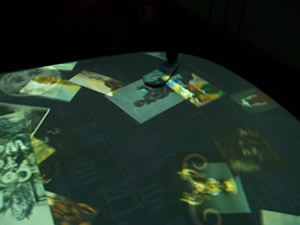
Just last week, I had the honor of visiting the Indianapolis Museum of Art (IMA) to discuss the future of technology in museums. This museum is boldly discovering ways to engage their visitors while opening the vault of curator knowledge for public access. From the XRoom to the handheld museum guide with wireless location sensing, I’m blown away by what they’ve accomplished in such a short period of time.
In preparing for this visit, I’ve been thinking long and hard about my own visions for the future of technology in museums. In my work with museums, I always start with these foundational principles:
- The original work of art is primary
- The physical work of art is sacred
- Nothing is better than being in the presence of the actual work of art
And the next step is to give each of you the key to discover the treasures of ideas, interpretations and history that are hidden within the brilliant minds of you, the artists, art historians, curators and museum staff. Treasures that add layers of meaning and open more doors to connecting with these precious works of art. But I can’t stop there. No, my mission is even larger than making the art and the museums knowledge available to everyone. My mission is to enrich the museum experience by tapping into the collective wisdom of everyone who crosses into the gallery space, both physically and virtually.
As I stood in the lobby of IMA, I witnessed part of my vision. A father and his young son were at the front desk. The son had obviously been crying. He didn’t want to go to an art museum. He just wanted to go outside and play. The museum staff warmly greeted them and prescribed a trip to the X Room. Imagine that you are the child, being hauled upstairs against your will.
As you enter the X Room, your eyes are drawn to a large table in the center of a dark room.
Small images of art are projected onto the table surface.
You notice an oval object resting on the table with an “?” on it. Reaching for the “?”, you move it along the table, like a wireless mouse, until the “?” is sitting on top of an image of art that interests you. Suddenly the images on the wall next to you change in response to where you just placed the “?” on the table.Your tears are long forgotten. You are fascinated and reach for another “wireless mouse” and look carefully at the art displayed on the table. You show your father how you can select a work of art and everyone in the room turns to see the information about this work displayed on another wall of the X Room.
Pictures and words can’t begin to describe the X Room. The table is visually engaging. You are immersed in the collection. You are in control and choose what is displayed on the wall. The experience is socially and intellectually stimulating. And my mind doesn’t stop here. Applying what I’ve learned about Web 2.0 and Falk & Dierking’s “Learning From Museums”, I’m developing goals for what I call Art 2.0. For me, these Art 2.0 goals are the key to making sure that technology truly enhances the museum experience as opposed to detracting from it. When I put technology in your hands, I want it to support your ability to discover, connect and share your museum experience digitally.
Discover
- Does the information technology (IT) ignite your personal interest in the art?
- Does IT trigger deeper exploration of the art.
- In the gallery and with the IT, is yourbehavior non-linear and emergent (not predetermined).
- Are you unaware of fatigue / unaware of passage of time.
Connect
- Do you make meaningful personal connection with the art?– Aha! moments
- Is the experience emotionally, intellectually, socially and/or spiritually satisfying to you?
Contribute
- Do you want to share personal meaning and discoveries with others?
- Did you add a valuable layer of interpretive information to the system that others find interesting and/or inspiring?
- Does the IT system become richer the more people use it?
Care to join me on this adventure? Or do you think technology doesn’t belong in the gallery? Can a system that encourages everyone to share their experiences have value? Do you care what others see, feel or think when they look at a work of art? Would you rather just know what the artist was thinking? Or, would you really just rather go outside and play?



Hello Glenda,
I enjoyed your talk at the IMA. As an IMA employee it was good to see that we are reaching out to get some perspective on the direction we are going with our technology. And that a commitment to interaction rather than presentation is driving alot of new initiatives. Thanks for coming by and giving us some perspective.
Mike, I’m so glad to hear that my ideas connected with your ideas! And I’m thrilled to see your blog for museum photographers. I can’t wait to see the transformations that occur in museum in the future!